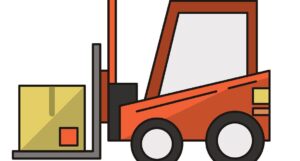Determining the applicable regulations for forklift operations in your location involves several steps. Heres a guide to help you navigate this process:

1. **Identify Regulatory Agencies**:
- **Federal**: In the U.S., the Occupational Safety and Health Administration (OSHA) is the primary federal agency overseeing workplace safety, including forklift operations.
- **State Agencies**: Each state may have its own occupational safety and health programs that can be more stringent than federal regulations. Check with your states OSHA office or equivalent agency.
2. **Consult Local Regulations**:
- **City or County Regulations**: Local governments may have additional safety regulations or ordinances that apply to forklift operations. Contact local government offices or safety departments for information.
3. **Review Industry Standards**:
- **ANSI/ITSDF Standards**: The American National Standards Institute (ANSI) and the Industrial Truck Standards Development Foundation (ITSDF) publish industry standards (B56 series) related to forklifts. These standards may be adopted by reference in regulations.
- **Trade Associations**: Industry-specific organizations may provide guidelines and best practices relevant to forklift operation.
4. **Check Manufacturer Guidelines**:
- Forklift manufacturers provide operational manuals that include safety and compliance information. These manuals often reference applicable regulations.
5. **Utilize Online Resources**:
- Websites like OSHAs official site provide access to regulations, guidelines, and resources. Similarly, state OSHA websites offer localized information.
- You can also find resources from safety organizations and industry groups that discuss regulatory compliance.
6. **Consult a Safety Professional**:
- Hiring a safety consultant or professional can help you navigate complex regulations and ensure compliance with both federal and state laws.
7. **Attend Training and Workshops**:
- Participating in safety workshops or training sessions can help you stay informed about current regulations and best practices for forklift operations.
8. **Join Professional Organizations**:
- Membership in industry associations can provide access to resources, updates on
regulatory changes, and networking opportunities with safety professionals.
By following these steps, you can ensure that you are aware of and compliant with the applicable regulations for forklift operations in your location.
 Forklift
ForkliftDetermining the applicable regulations for forklift operations in your location involves several steps. Heres a guide to help you navigate this process:
1. **Identify Regulatory Agencies**:
- **Federal**: In the U.S., the Occupational Safety and Health Administration (OSHA) is the primary federal agency overseeing workplace safety, including forklift operations.
- **State Agencies**: Each state may have its own occupational safety and health programs that can be more stringent than federal regulations. Check with your states OSHA office or equivalent agency.
2. **Consult Local Regulations**:
- **City or County Regulations**: Local governments may have additional safety regulations or ordinances that apply to forklift operations. Contact local government offices or safety departments for information.
3. **Review Industry Standards**:
- **ANSI/ITSDF Standards**: The American National Standards Institute (ANSI) and the Industrial Truck Standards Development Foundation (ITSDF) publish industry standards (B56 series) related to forklifts. These standards may be adopted by reference in regulations.
- **Trade Associations**: Industry-specific organizations may provide guidelines and best practices relevant to forklift operation.
4. **Check Manufacturer Guidelines**:
- Forklift manufacturers provide operational manuals that include safety and compliance information. These manuals often reference applicable regulations.
5. **Utilize Online Resources**:
- Websites like OSHAs official site provide access to regulations, guidelines, and resources. Similarly, state OSHA websites offer localized information.
- You can also find resources from safety organizations and industry groups that discuss regulatory compliance.
6. **Consult a Safety Professional**:
- Hiring a safety consultant or professional can help you navigate complex regulations and ensure compliance with both federal and state laws.
7. **Attend Training and Workshops**:
- Participating in safety workshops or training sessions can help you stay informed about current regulations and best practices for forklift operations.
8. **Join Professional Organizations**:
- Membership in industry associations can provide access to resources, updates on regulatory changes, and networking opportunities with safety professionals.
By following these steps, you can ensure that you are aware of and compliant with the applicable regulations for forklift operations in your location.
forklift companies